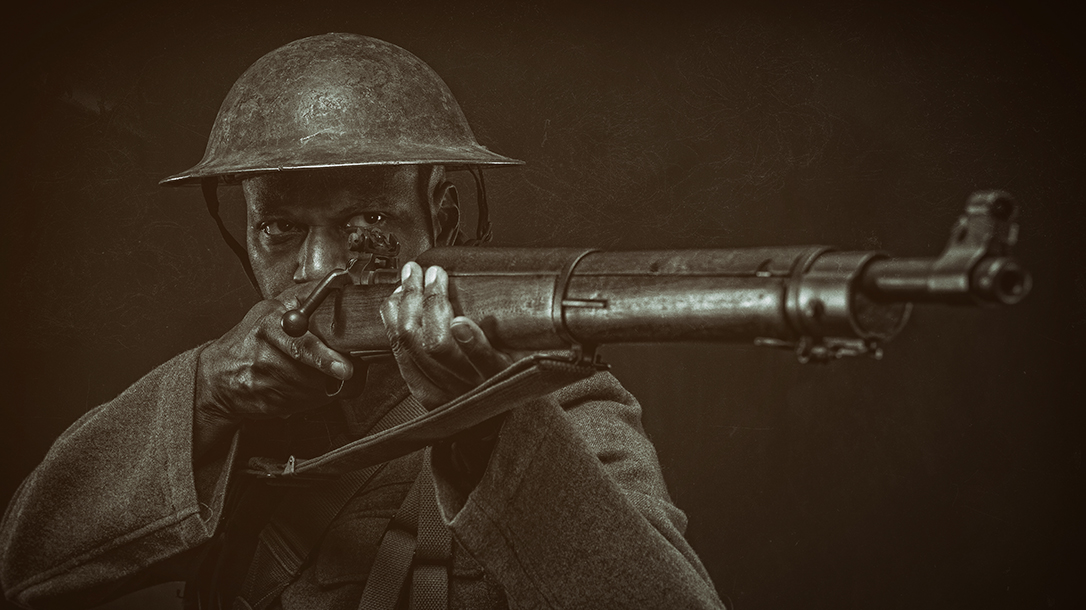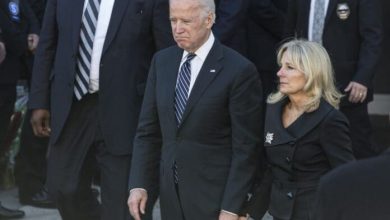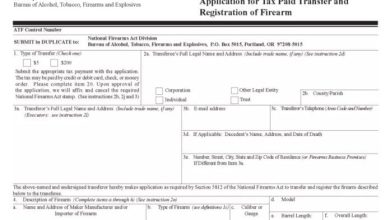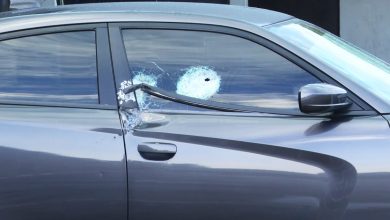Harlem Hellfighters: WWI’s Fiercest Warriors

In the early days of World War I, France experienced heavy fighting with Germany. In dire peril of defeat, they requested the immediate assistance of the United States Armed Forces. One of the first units to deploy to France was the Harlem Hellfighters. They were a National Guard Unit comprised of African-American men from New York and several surrounding states. Later, they were re-designated as the 369th Infantry. The Germans called them “Hellfighters” because of their deadly hand-to-hand fighting skills and ability to avoid capture.
The Harlem Hellfighters
The Harlem Hellfighters deployed with 2,000 members. By the last days of the war, they had lost 1,300 to death or severe wounds. The unit had the highest casualty rate of any American regiment; however, they never lost a trench. They also never lost a soldier to enemy capture. The Hellfighters spent more days in the trenches than any other U.S. infantry unit. They were also the first American unit to reach the Rhine. Unit members received 170 Croix de Guerre awards for bravery from France. Several members received the Distinguished Service Cross and the Medal of Honor.
These fighting men deployed from a hyper-segregated America rife with riots and lynchings and entered the color-blind culture of France. The Hellfighters were assigned directly under French command. The trench-experienced, unbigoted French infantry welcomed them with open arms. Due to the language barrier, the French soldiers had to conduct an ad hoc game of tactical charades; demonstrating trench-clearing tactics to the New York soldiers was a challenge. The Harlem Hellfighters had to learn trench and raiding tactics, plus become proficient with their newly issued French equipment. The arsenal had Lebel rifles, French maps, rifle-fired grenades, and machine guns. The New Yorkers also carried the infamous three-pound, nine-inch-blade bolo knife. Peter N. Nelson documents the unit’s exploits in his book, “A More Unbending Battle.”
Kicking German Ass and Taking Jazz To France
One of the more famous Harlem Hellfighters of the New York unit was Lt. Jim Europe. He was a driven bandleader who volunteered to be one of the first to go on a raid with the French. The raiding party taught Europe to sanitize his gear. Sanitizing meant removing any pocket litter that could be used as intel if captured or killed during the raid. After the French had Europe shed his helmet for soft headgear and armed him with a pistol, they peppered their objective with heavy artillery fire.
Europe was the first Harlem Hellfighter to leave the wire on a raid. The Hellfighters soon repeatedly conducted raids like these. They’d kill and capture Germans until the war’s end. While known as a disciplined bandleader in the States, he would later be credited for introducing Jazz to France. His band was comprised of soldiers who played for the French army during their deployment. They eventually played concerts, parades, and recorded music back home.
Victory Rewards the Patient
During one stretch of time of their deployment, a German sniper plagued the 369th. He’d target the runners bringing food to the entrenched soldiers. Unfortunately, the Hellfighters in the observation posts were unable to locate the sniper’s position. This continued until Corporal Horace Pippen and another American soldier volunteered to end it. They ventured out past the trenches and the observation posts into the area where the sniper might be.
The duo reconnoitered throughout the night and eventually found a location to set up watch. However, unlike the days prior, there was no sniper fire for breakfast. Cold, tired, and hungry, Pippen stayed in place and remained stationary for several more hours. Then, at lunchtime, the sniper fired one single shot, causing the foliage to break around his position. Pippen saw it and fired one shot into the suspected hide. A fellow corporal confirmed the hit by watching the sniper’s body fall from the tree.
Corporal Pippen and other Hellfighters conducted a later mission that captured ten German soldiers. Eventually, Pippen and the remaining 369th would be part of the final push toward victory over the Germans. They engaged in many vicious battles. Pippen would capture two machine gun nests while receiving gunshot wounds to his neck, shoulder, and right arm.
Fighting Solo With a Bolo
One of the most well-known Harlem Hellfighters was Pvt. Henry Johnson. Born in Winston-Salem, N.C., he ran away at the age of 12 to Albany, N.Y. By 19, he was in France fighting the Germans. Once, Johnson and fellow soldier Needham Roberts were on an observation post outside of the wire and observed a German patrol. They engaged the raiding party and quickly received shrapnel injuries from enemy grenades. Johnson charged and fired his Lebel rifle while receiving incoming rounds from a Luger-bearing German who was dangerously close. The enemy immediately outflanked Roberts and Johnson. Two Germans attempted to capture the now unconscious and shrapnel-riddled Roberts while Johnson was fighting for his life with an empty rifle. He swung it like an axe, striking a helmetless German head.
To save Roberts from capture, Johnson unsheathed his bolo knife. He buried the nine-inch blade into the skull of the enemy. Then he eviscerated another German who was simultaneously shooting him in his thigh and foot with a Luger. The gut-cut German fired no more, and Johnson, still in the fight, redirected and threw well-aimed grenades at the remaining raiders. They were attempting to breach the wire and save their wounded. Unable to withstand the barrage of explosions and casualties, the enemy fled. Eventually, a team extracted Roberts and Johnson to an aid station. Roberts had numerous shrapnel injuries and one bullet wound. Johnson had received a total of 21 wounds, including four from bullets.
Reports say that Henry Johnson and Needham Roberts battled 24 enemy soldiers in that fight. They not only survived but also repelled the breeching of the wire by the Germans. Their actions caused the full retreat of the raiding party. Both men survived and received the Purple Heart and the Croix de Guerre. In 2015, Henry Johnson posthumously received the Medal of Honor.
Race To the Rhine
The Harlem Hellfighters were ultimately part of the final offensive that toppled the German front. Battle-hardened men like William Butler comprised the 369th. He received the Distinguished Service Cross and the Croix de Guerre for saving a lieutenant and five soldiers from enemy capture. Butler waited until the German raiding party and its prisoners got close enough to engage. Then, he opened up with his machine gun, killing 10 Germans, capturing one enemy officer and driving the enemy to abandon their prisoners and escape.
William Jackson, another of these battle-hardened Hellfighters, was so motivated that he refused to attend a parade because he wanted to go on more raids. Superiors accused him of insubordination; however, the judge at his court-martial hearing dismissed the charges, released him, and gave him a new bolo knife to kill more Germans. These men of the 369th eventually broke through the German trench lines and conducted house-to-house fighting in the final wave of the war and were the first Americans to reach the Rhine.

Back To the World
After the war, Lt. Jim Europe continued his music career and was acknowledged as one of the greatest of all ragtime composers and African-American bandleaders. Many of his songs reflected his war experiences. Henry Johnson returned to the States and toured, giving speeches. Many recognized Johnson for his bravery, including Theodore Roosevelt. Roosevelt said Johnson was one of the five bravest men of World War I. Horace Pippen would live with the partial paralysis of his right arm caused by his injuries, but he persevered and taught himself to paint. He eventually became a renowned artist with his paintings exhibited in, among other museums, the New York Museum of Modern Art and the Philadelphia Museum of Art.

Didn’t find what you were looking for?
Read the full article here






